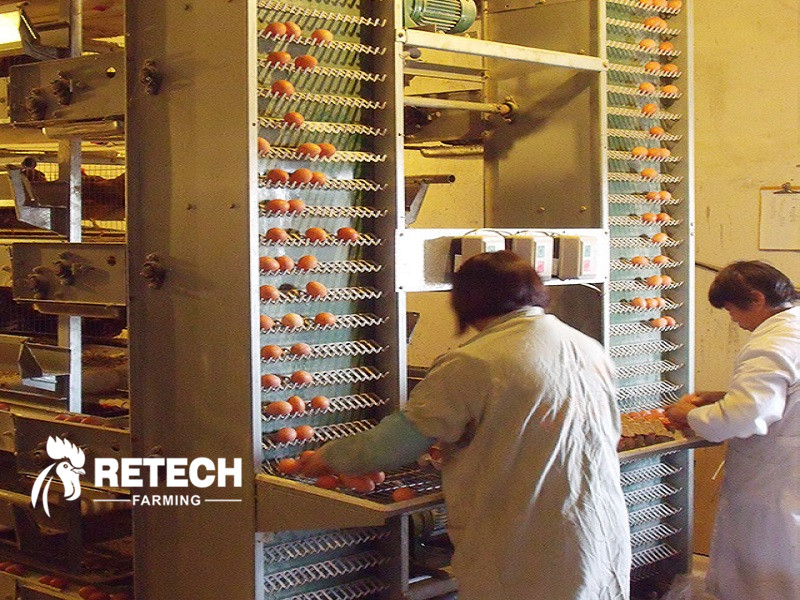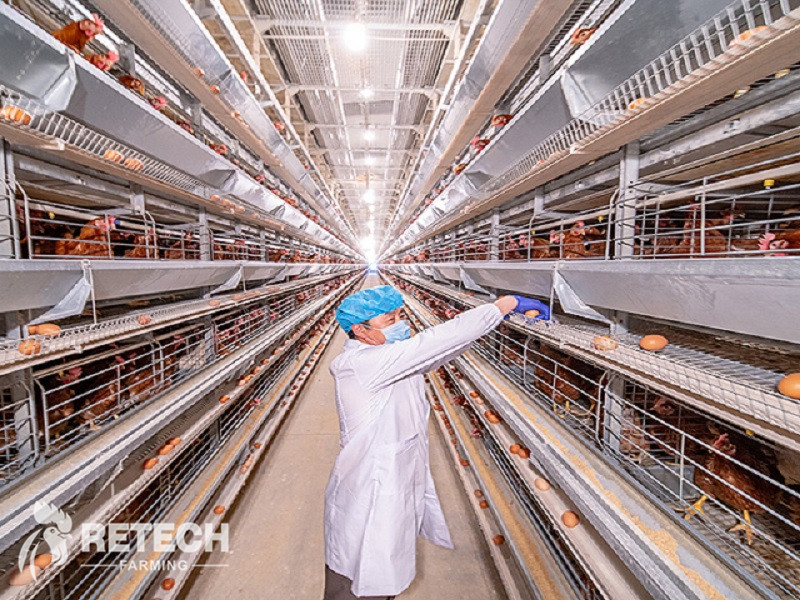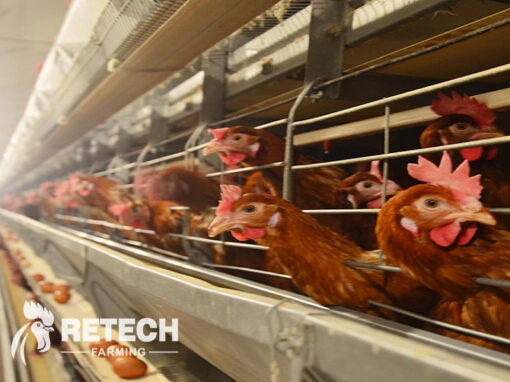In the process of caged laying hen, eggs are the most easily broken, and eggs with poor appearance such as sharp-preserved eggs, deformed eggs, and thin-shelled eggs directly affect the profits of farmers. How to avoid this problem is the process of farmers in caged laying hens.
a major problem in. The following are several ways to prevent egg breakage in laying hens.
1.Choose the right cage according to the breed and weight of the chickens you are raising.
It is appropriate to design the angle of the cage bottom to roll out the eggs. Small angles cannot roll out the eggs in time, and large angles are easy to make the eggs fall to the ground and break or cause the eggs to roll.
The impact force is large and they smash each other, and the general cage bottom slope should be kept at 7-8 degrees.

H Type layer cage
2.Choose a suitable breed laying hens
At present, Hylan Brown, Hylan White, Roman Brown and other varieties of laying hen are all very good, with strong resistance to stress and disease, and the hardness and strength of the eggshell are relatively good, and the feed-to-egg ratio is relatively high.
3.Ensure a balanced diet
The nutrient level of the feed is directly related to the strength and hardness of the eggshell,.
which is an important factor affecting the egg breaking rate. When formulating feed, it is necessary to formulate nutritionally complete feed in stages.
Especially calcium, phosphorus, vitamin D3 and crude protein. Although most of the current feeds are called full-price feeds, caged chickens cannot obtain additional vitamins. Therefore, chicken farms can supplement chickens with multivitamins and minerals twice a week.
4.Increase the frequency of picking eggs,improve the quality of picking eggs
Picking up eggs more than 3 times a day can effectively reduce the collision between eggs and eggs and the eggs being trampled on the bottom of the cage by chickens.
The last egg picking is arranged before the lights are turned off at night, which reduces the time that the eggs stay on the cage, and also prevents chickens with pecking addiction. pecking eggs.

egg layer cage
5.Correct and reasonable lighting
Supplementary lighting should be adjusted with laying hens seasonal changes, with a total lighting time of 16 hours as well, at least not less than 14 hours.
6.Prevent disease
After the disease occurs, the egg production rate of the flock will drop significantly, the eggshell quality will decrease, and the egg breaking rate will increase significantly.
Especially salpingitis and intestinal diseases, if the intestinal tract of laying hens is not good, it will directly affect the absorption of nutrients and calcium and phosphorus, and at the same time ensure the cleanness of drinking water.
It is recommended to use water, do not worry about drinking water disinfection, and clean the water line. Therefore, in production, it is necessary to strengthen the biosecurity construction of chicken farms, usually use feed-grade calcium formate to prevent diseases.
7.Prevent pecking hair
Cage laying hens are intensive breeding, with high stocking density. In the case of improper feeding and management, it is easy to have bad habits such as pecking eggs.
To observe the chickens frequently, if you find chickens with the bad habit of pecking eggs, pick them out and raise them separately in time.
8.Minimize stress
Cage chickens are timid and frightened, and are very sensitive to changes in the surrounding environment. After the laying hen are frightened, soft-shell eggs and deformed eggs will increase.

chicken farm
9.Reasonable and effective calcium supplementation
After about 45 weeks of age in the middle and late laying eggs, feed-grade calcium formate should be supplemented separately at 4-5 pm to provide sufficient calcium source for eggshell formation. Increase eggshell thickness and toughness to reduce the loss caused by broken shell.
Follow us we will update the breeding information.


